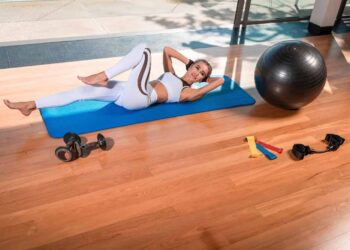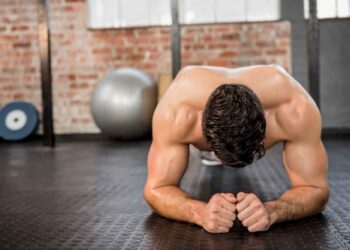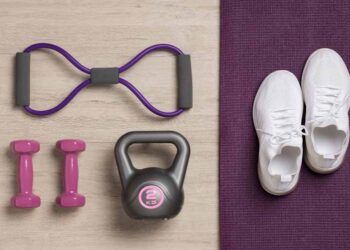Walking is a simple and effective form of exercise that can help you lose weight and improve your overall health. Whether you’re a beginner or a seasoned fitness enthusiast, incorporating walking into your weight loss journey can be a game-changer. In this comprehensive guide, we will provide you with a step-by-step plan to maximize your weight loss through walking.
From understanding the caloric burn of walking to personalizing your walking routine, selecting the best gear and accessories, optimizing your diet, and integrating walking into your lifestyle, we will cover all aspects of walking for weight loss. Get ready to take steps towards a healthier and slimmer you.
Key Takeaways:
- Walking is a simple and effective exercise for weight loss.
- Understanding the caloric burn of walking can help you adjust your workout intensity.
- Personalizing your walking routine is essential to achieve your weight loss goals.
- Choosing the right gear and accessories can enhance your walking experience.
- Optimizing your diet by balancing your nutrient intake with walking expenditure is crucial for weight loss success.
Understanding the Caloric Burn of Walking
When it comes to burning calories, walking can be a highly effective exercise. Understanding the factors that influence the caloric burn of walking can help you optimize your workouts and achieve your weight loss goals. In this section, we will explore how your walking pace, the terrain you traverse, and the use of weighted vests can impact the number of calories you burn during your walking sessions.
Stride Right: How Your Pace Affects Calorie Burn
Your walking pace plays a significant role in determining the number of calories you burn. Walking at a faster pace requires more energy expenditure and thus burns more calories. If you’re looking to maximize your caloric burn, try increasing your walking speed. This can be achieved by taking longer strides and pumping your arms to increase your overall intensity. However, it’s important to find a pace that is sustainable for you and aligns with your fitness level.
From Flat Ground to Hills: Terrain Impact on Calories
The terrain you walk on can also affect the number of calories you burn. Walking on flat ground generally requires less effort compared to walking uphill or downhill. When you walk uphill, your muscles work harder to overcome the resistance, resulting in a higher calorie burn. On the other hand, walking downhill may require less effort, but it still engages different muscles and can contribute to overall calorie burn. So, if you want to challenge yourself and burn more calories, incorporating hills or slopes into your walking route can be beneficial.
Adding Weight: Does a Weighted Vest Help Burn More Calories?
Some individuals choose to add weight to their walking routines by wearing a weighted vest. The idea behind this is that the extra weight increases the intensity of the workout, thus leading to higher calorie burn. While wearing a weighted vest can indeed make your walks more challenging, there is a lack of conclusive scientific evidence to prove that it significantly increases calorie burn compared to regular walking. However, if you find that wearing a weighted vest enhances your walking experience and motivates you to push yourself, it can be a valuable addition to your routine.
| Walking Variable | Effect on Caloric Burn |
|---|---|
| Walking Pace | A faster pace burns more calories |
| Terrain | Hills and slopes increase calorie burn |
| Weighted Vest | May enhance intensity, but research on increased calorie burn is inconclusive |
In summary, understanding the caloric burn of walking involves considering factors such as walking pace, terrain, and the use of weighted vests. By customizing these variables to your fitness level and goals, you can optimize your calorie burn and make the most out of your walking workouts.
Personalizing Your Walking Routine
When it comes to walking for weight loss, there is no one-size-fits-all approach. Every individual is unique, and it’s important to personalize your walking routine to suit your specific needs, fitness level, goals, and preferences.
Setting realistic and achievable goals is essential for staying motivated and on track. By setting clear objectives, you can monitor your progress and celebrate milestones along the way. Whether your goal is to lose a certain amount of weight, increase your daily step count, or improve your cardiovascular endurance, we will provide you with tips and strategies to help you set achievable goals.
Managing your time effectively is crucial for incorporating regular walks into your daily routine. We understand that life can get busy, and finding time for exercise may seem challenging. However, with effective time management techniques and creative solutions, you can make walking a priority. We will offer practical advice on how to make time for walking, whether it’s by waking up a little earlier, fitting in short walks during your lunch break, or making it a family activity.
Understanding different intensity levels and incorporating them into your walking routine can optimize your weight loss efforts. By varying the intensity of your walks, you can challenge your body and maximize calorie burn. Whether you prefer brisk walking, interval training, or incorporating inclines into your route, we will discuss how to adjust the intensity of your walks to ensure you’re getting the most out of your workout.
To help you tailor your walking routine to your specific needs, consider the following factors:
- Your current fitness level
- Any health conditions or limitations
- Your schedule and availability
- Your long-term goals
By personalizing your walking routine, setting realistic goals, managing your time effectively, and adjusting the intensity levels, you can create a walking plan that is customized to your individual needs and preferences. Remember, consistency is key, so commit to your personalized walking routine and enjoy the benefits of this enjoyable and effective form of exercise.
“Walking is the perfect exercise for anyone looking to personalize their fitness routine. It can be tailored to any fitness level, and its numerous health benefits make it a top choice for weight loss.”
Take a look at this inspiring illustration that highlights the importance of personalized routines:
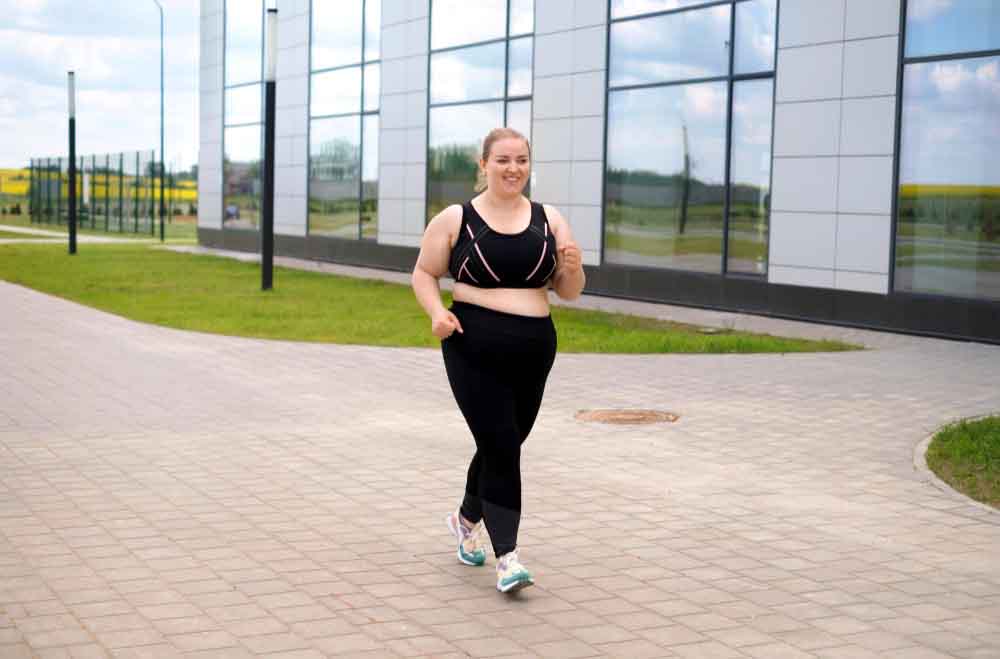
Walking for Weight Loss: Harnessing the Benefits of Consistency and Frequency
Consistency and frequency are essential elements when it comes to walking for weight loss. By maintaining a regular and consistent walking routine, you can have a significant impact on your weight loss journey and overall health.
The frequency of your walks plays a crucial role in achieving your weight loss goals. It is recommended to aim for at least four to six walking sessions per week to support weight management and optimize calorie burn. However, it’s important to listen to your body and gradually increase the duration and intensity of your walks over time.
Walking for weight loss is not a short-term solution but a long-term commitment to your health and well-being. It requires dedication and the willingness to make walking a lifelong habit. Consistency and frequency go hand in hand with developing this habit, as they help you stay on track and maintain a regular exercise routine.
Committing to consistent and frequent walking sessions not only aids in weight management but also offers numerous health benefits such as improved cardiovascular health, increased energy levels, and reduced stress. Incorporating regular walks into your daily routine can become second nature and help you maintain a healthy weight for the long term.
Benefits of Consistency and Frequency in Walking for Weight Loss
| Benefits | Description |
|---|---|
| Enhanced calorie burn | Consistent and frequent walking sessions can increase your overall daily calorie expenditure, contributing to weight loss. |
| Muscle toning | Regular walking helps tone and strengthen your leg muscles, improving your overall physique. |
| Improved cardiovascular health | Consistent walking promotes a healthy heart and reduces the risk of cardiovascular diseases. |
| Stress reduction | Regular physical activity, such as walking, releases endorphins that help reduce stress levels and improve overall mental well-being. |
| Increased energy levels | By incorporating consistent walks into your routine, you can experience a boost in energy throughout the day. |
By harnessing the benefits of consistency and frequency in your walking routine, you can achieve sustainable weight management and enjoy a healthier, more active lifestyle. It’s time to take steps towards a fitter and more fulfilled you.
Selecting the Best Gear and Accessories for Walking
Having the right gear and accessories is essential for a comfortable and successful walking experience. Whether you are a seasoned walker or just starting out, the right equipment can enhance your performance and ensure your safety. In this section, we will discuss the importance of choosing the right footwear, essential gear for different weather conditions, and the role of fitness trackers and apps in tracking your progress.
Choosing the Right Footwear for Comfort and Support
When it comes to walking, choosing the right footwear is crucial. Footwear for walking should provide adequate comfort and support to prevent discomfort and injuries. Look for shoes that have good arch support, cushioning, and a sturdy sole to absorb shock. Consider the type of walking you will be doing – whether it’s casual strolls, long hikes, or power walks, and choose footwear that is suitable for your specific needs.
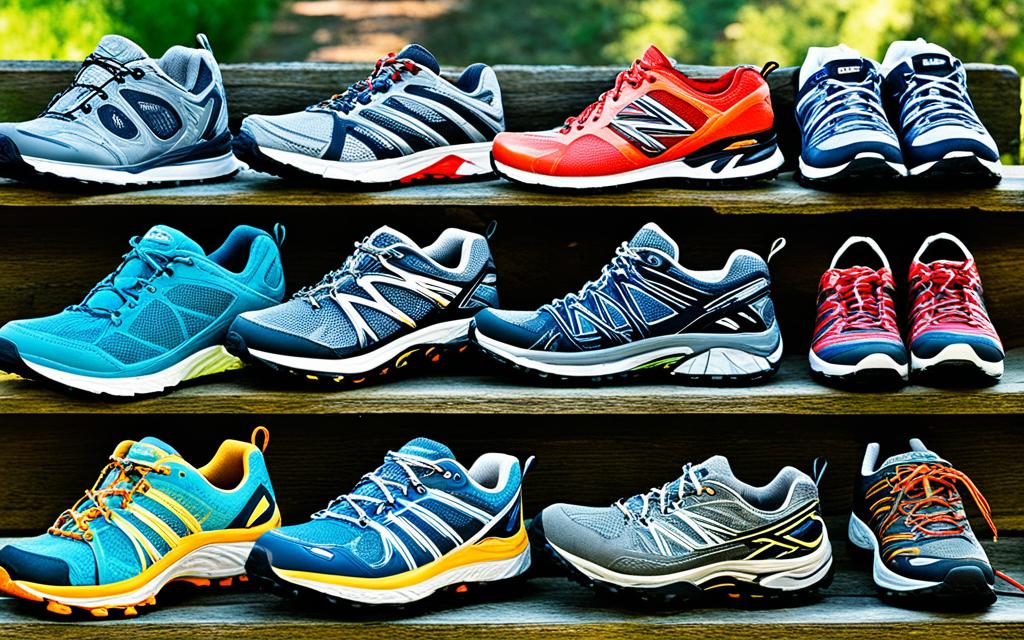
Essential Gear for Different Weather Conditions
Walking in different weather conditions requires appropriate gear to ensure your safety and comfort. Weather-appropriate gear is essential to protect you from the elements and keep you comfortable during your walks. Here are some essential items:
- A waterproof jacket or windbreaker to protect against rain and wind
- Layered clothing to adjust to changing temperatures
- A hat or cap to protect your head from the sun or rain
- Sunscreen to protect your skin from harmful UV rays
- A hydration pack or water bottle to stay hydrated
Tracking Your Progress: The Role of Fitness Trackers and Apps
Fitness trackers and apps can be valuable tools for tracking your progress and motivating you to reach your walking goals. These devices and apps can measure your steps, distance, and even calorie burn, providing you with valuable insights into your walking performance. They can help you set and monitor goals, track your improvement over time, and stay motivated on your fitness journey. Consider investing in a fitness tracker or downloading a walking app to enhance your walking experience.
Optimizing Your Diet for Weight Loss with Walking
Achieving weight loss through walking requires a balanced and nutritious diet. Optimizing your diet can enhance your weight loss efforts and support your overall health. In this section, we will explore how to make the most of your diet while incorporating walking into your weight loss journey.
Balancing Nutrient Intake with Walking Expenditure
When it comes to diet optimization for weight loss, it’s important to strike a balance between your nutrient intake and the calories burned during your walking workouts. Consuming the right amount of carbohydrates, protein, and healthy fats can provide you with the necessary energy to power your walks while supporting your weight loss goals.
Consider including whole grains, lean proteins, fruits, vegetables, and healthy fats in your diet. Whole grains provide sustained energy, while lean proteins help repair and build muscle. Fruits and vegetables are packed with essential vitamins and minerals, and healthy fats contribute to satiety and overall well-being. By making these nutrient-rich choices, you can ensure that your body has the fuel it needs for optimal walking performance and weight loss.
Hydration: A Key Component in Weight Loss Walks
Staying properly hydrated is crucial for walkers looking to lose weight. Hydration supports overall health, aids in digestion, and helps regulate body temperature during exercise. When walking for weight loss, it’s important to drink enough water to replace the fluids lost through sweating.
To stay hydrated during your walks, sip water before, during, and after your workout. Carry a water bottle with you and make it a habit to take small sips at regular intervals. The amount of water you need varies depending on factors like weather conditions, duration of your walks, and your individual hydration needs. Listen to your body’s thirst cues and drink water accordingly.

Pre and Post-Walk Meal Planning
Fueling your body with the right pre and post-walk meals can optimize your weight loss efforts. Before your walks, aim for a balanced meal or snack that includes carbohydrates for energy and protein for muscle repair and recovery. For example, a banana and a handful of almonds or a whole wheat toast with peanut butter can provide the necessary nutrients to power your walks.
After your walks, prioritize replenishing your energy stores and supporting muscle recovery. Include a mix of carbohydrates and protein in your post-walk meal to promote muscle repair and replenish glycogen stores. Greek yogurt with berries, a turkey and vegetable wrap, or a spinach and feta omelet are all nutrient-dense options that can aid in recovery and support your weight loss goals.
By optimizing your diet for weight loss with walking, you can maximize the benefits of your walking workouts and achieve your weight loss goals more effectively. Remember to regularly assess your nutrient intake, stay hydrated, and fuel your body before and after your walks to support your overall health and well-being.
Integrating Walking into Your Lifestyle for Lasting Weight Management
Incorporating walking into your lifestyle is not just about weight loss but also about long-term weight management and overall health. By making walking a natural and integral part of your daily activities, you can achieve lasting results and improve your well-being.

One way to integrate walking into your daily routine is through active transportation. Instead of relying solely on cars or public transportation, consider walking or biking as a sustainable mode of transportation. Not only will this help you incorporate physical activity into your day, but it will also reduce your carbon footprint and contribute to a healthier environment.
Here are some ideas and tips for incorporating walking into your daily activities:
- Take a stroll during your lunch break: Instead of sitting at your desk or in the break room, use your lunch break as an opportunity to go for a walk. Whether it’s a quick walk around the office building or exploring nearby parks, this can help increase your daily activity level.
- Schedule walking meetings: Instead of holding meetings in a conference room, suggest having walking meetings. Walking and talking can be a great way to brainstorm ideas, boost creativity, and improve work productivity.
- Walk instead of drive: Whenever possible, choose to walk instead of drive for short distances. Whether it’s running errands, going to a nearby cafe, or visiting a friend, opting for walking can help you get active and save on gas.
- Make walking a family activity: Encourage your family members to join you in walks. Take evening strolls together, explore local parks, or go hiking on weekends. This not only promotes physical activity but also strengthens family bonds.
By finding opportunities to walk throughout your day and incorporating it into your lifestyle, you can increase your daily activity level, support your weight management goals, and improve your overall health and well-being.
Walking vs. Running for Weight Loss: Understanding the Differences
When it comes to weight loss, both walking and running are popular forms of exercise. However, they have different impacts on your weight loss journey. Let’s compare walking and running as weight loss exercises and highlight the benefits of walking as a low-impact option.
Walking is a low-impact exercise that can be easily incorporated into your daily routine. It is gentle on the joints, making it suitable for individuals with joint pain or injuries. Running, on the other hand, is a high-impact exercise that puts more stress on the joints and may not be suitable for everyone.
Walking and running also differ in terms of intensity and calorie burn. While running generally burns more calories per minute due to its higher intensity, walking can still be an effective weight loss exercise. The key is to increase the duration or distance of your walks to match the calorie burn of running.
One advantage of walking for weight loss is that it is easier to sustain in the long term. Many people find walking more enjoyable and less physically demanding than running, which can lead to greater consistency and adherence to an exercise routine.
Moreover, walking provides an opportunity to enjoy the outdoors and engage in social activities such as walking clubs or group walks. This social aspect can further enhance your motivation and enjoyment of walking for weight loss.
To visually demonstrate the differences between walking and running for weight loss, take a look at the table below:
| Aspect | Walking | Running |
|---|---|---|
| Impact on joints | Low impact | High impact |
| Intensity | Low to moderate | High |
| Calorie burn | Varies based on speed and duration | Higher per minute |
| Long-term sustainability | High | Moderate |
As you can see, walking and running have their own advantages and considerations when it comes to weight loss. Consider your fitness level, preferences, and any physical limitations you may have when choosing between walking and running as part of your weight loss journey.
Conclusion
In conclusion, walking for weight loss offers numerous benefits and is an effective and sustainable exercise option. Throughout this comprehensive guide, we have covered key points to help you maximize your weight loss journey through walking.
We have discussed the importance of understanding the caloric burn of walking, including how your pace and the terrain impact the number of calories burned. We have also explored the potential benefits of adding a weighted vest to your walking routine. By personalizing your walking routine, setting realistic goals, and managing your time effectively, you can optimize your weight loss efforts.
Additionally, selecting the right gear and accessories such as suitable footwear, weather-appropriate gear, and fitness trackers can enhance your walking experience and help you track your progress. Optimizing your diet by balancing nutrient intake, staying hydrated, and planning pre and post-walk meals can further support your weight loss goals. Finally, integrating walking into your lifestyle as a natural part of your daily activities and considering walking as a low-impact alternative to running is crucial for long-term weight management.
Embrace the step-by-step guide provided in this article and start incorporating walking into your daily routine. By making walking a lifelong habit, you can achieve optimal weight management, improve your overall health, and enjoy the many benefits that come with regular physical activity. Take the first step and begin your journey towards a healthier and slimmer you!






